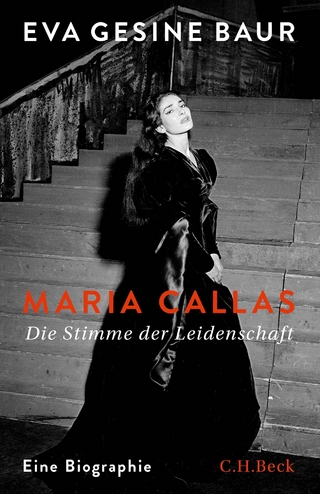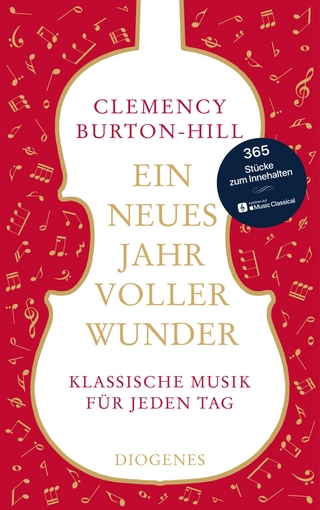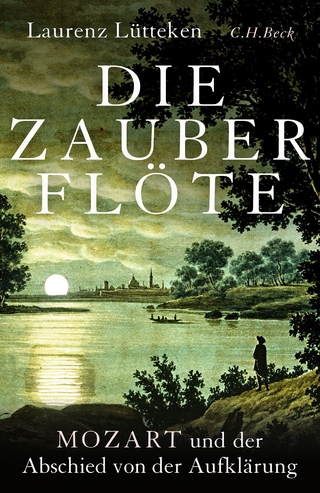
J. S. Bach
Oxford University Press Inc (Verlag)
978-0-19-510802-6 (ISBN)
- Lieferbar (Termin unbekannt)
- Versandkostenfrei innerhalb Deutschlands
- Auch auf Rechnung
- Verfügbarkeit in der Filiale vor Ort prüfen
- Artikel merken
In this new survey, leading musicologist George B. Stauffer traces the evolution of Bach's organ works within the broad spectrum of his development as a composer. With detailed discussions of the individual pieces, the book shows how Bach initially drew on contemporary models from Germany and France before evolving a personal idiom based on the concertos of Antonio Vivaldi. In Leipzig, he went still further, synthesizing national and historical styles to produce cosmopolitan masterpieces that exude sophistication and elegance. Serving as a backdrop to this growth was the emergence of the Central German pre-Romantic organ, which inspired Bach to write pieces with unique chamber-music, choral, and orchestral qualities. Stauffer follows these developments step-by-step, showing how Bach's unending quest for novelty, innovation, and refinement resulted in organ works that continue to reward and awe listeners today.
George B. Stauffer is Distinguished Professor of Music History and Dean Emeritus of the Mason Gross School of the Arts, Rutgers University. He is well known for his writings on the music and culture of the Baroque Era and the life and works of Johann Sebastian Bach, in particular. He has written or edited eight books, including Bach: The Mass in B Minor and The World of Baroque Music, and he has contributed numerous articles to American, European, and Asian journals. He has also written pieces for The New York Review of Books, The New York Times, and The Weekly Standard. Stauffer has held Guggenheim, Fulbright, ACLS, IREX, and Bogliasco fellowships, and he is a frequent speaker at Bach festivals, concert halls, and universities in the United States and abroad. A past President of the American Bach Society, Stauffer is General Editor of the Leupold Edition of The Complete Organ Works of Johann Sebastian Bach.
Preface
Abbreviations and Terms
Introduction: The World of Bach's Organ Music
Central German Music Culture ~ Grandest Machine of All ~ Transmission of Bach's Organ Works
Part I - Learning the Craft: Eisenach, Ohrdruf, Lüneburg, and Weimar (1685-1703)
1 - The Young Bach
Eisenach ~ Ohrdruf ~ Lüneburg ~ Weimar
2 - Study and Models
Ohrdruf: Johann Christoph Bach and Thuringian Circles ~ Lüneburg: Georg Böhm and North German Circles
3 - Initial Efforts
Neumeister Chorales ~ Free Works
Part II - The "First Fruits": Arnstadt and Mühlhausen (1703-1708)
4 - Bach in Arnstadt and Mühlhausen
Organist at the New Church ~ Lübeck Pilgrimage ~ Organist at St. Blasius's Church
5 - Chorale-based Works
Chorale Settings ~ Chorale Partitas
6 - Free Works
Multi-sectional Praeludia ~ Prelude-Fugue Pairs ~ Independent Fugues ~ Unica
Part III - "The Golden Years": Weimar (1708-1717)
7 - Bach in Weimar
Organist and Chamber Musician at the Weimar Court ~ Chapel Organ and Other Instruments ~ New Connections, New Influences ~ Eclectic Blends and Hybrid Forms
8 - The Orgel-Büchlein
Compositional History ~ Function in Weimar ~ Musical Style: Melody Chorales, Canonic Chorales, Florid-Melody Chorales, Unique Settings
9 - Concerto Transcriptions
Incomparable Things ~ Challenges of Transcription Process ~ The Music: Vivaldi Transcriptions, Johann Ernst Transcriptions ~ Bach versus Vivaldi
10 - Large Chorale Settings
Fore-Imitation Settings ~ Florid-Melody Settings ~ Chorale Trios ~ Cantus Firmus Settings ~ Eclectic Blends ~ Sei gegrüßet, Jesu gütig
11 - Small Chorale Settings
Miscellaneous Manual Works ~ Chorale Fughettas ~ Congregational Accompaniment: Figured-Bass and Interlude Settings
12 - Free Works: Prelude-Fugue Pairs
Prelude and Fugue Ideal ~ Modification of North German and French Idioms ~ Adoption of Italian Concerto Principles
13 - Free Works: Independent Fugues and Singular Pieces
Independent Fugues ~ Experimental Forms ~ The Great Passacaglia
Part IV - The Organist as Capellmeister: Cöthen (1717-1723)
14 - Bach in Cöthen
Capellmeister at the Cöthen Court ~ Repertory ~ New Stylistic Developments ~ Organ Inspections and Performances
15 - Organ Teacher, Consultant, and Recitalist
Didactic Works ~ Organ Pedagogue ~ Organ Examiner and Consultant ~ Organ Recitalist
16 - Bach's Art of Registration
The German Tradition ~ Full Organ ~ All the Remaining Diverse Variations ~ Hymn Accompaniment ~ Particular Stops and Combinations
Part V - The Grand Synthesis: Leipzig (1723-1750)
17 - Bach in Leipzig
St. Thomas Cantor and Director of Music ~ Fusion of Styles ~ New Role of Revision and Recycling ~ Central German Organ
18 - Cantata and Passion Movements with Obbligato Organ and Miscellaneous Trios
Obbligato Organ Repertory ~ Performance Considerations ~ Musical Style ~ Trio Transcriptions and Compositions ~ Function of the Pieces ~ Stylistic Aspects
19 - Six Sonatas
The Genesis of the Collection ~ Pedagogical Use ~ Musical Style ~ Performance Issues ~ Postscript
20 - Free Works: Prelude and Fugues
An Unorthodox Transcription ~ Four Monumental Works
21 - Free Works: Singular Pieces
Singular Pieces ~ Prelude and Fugues: Final Directions
22 - Clavier-Übung III
The Clavier-Übung Series ~ Genesis of the Original Print ~ The Music ~ Structure of the Collection ~ Duets ~ Reception of the Music
23 - Canonic Variations on "Vom Himmel hoch, da komm ich her"
The Canonic Variations Project ~ The Music ~ Organizational Schemes
24 - The Schübler Chorales
The Problematic Original Print ~ Hand-Corrected Copies ~ The Music ~ Structure of the Collection ~ Significance of the Settings
25 - Nineteen Large Chorales of Various Kinds
The Leipzig Chorale Portfolio ~ Why These Settings? ~ The Revisions ~ Unanswered Questions ~ Search for Perfection
Appendix: Three Central German Organs, specifications
| Erscheint lt. Verlag | 24.6.2024 |
|---|---|
| Zusatzinfo | 138 music examples, 31 halftones, 7 line drawings, 10 tables |
| Verlagsort | New York |
| Sprache | englisch |
| Maße | 165 x 241 mm |
| Gewicht | 980 g |
| Themenwelt | Kunst / Musik / Theater ► Musik ► Klassik / Oper / Musical |
| ISBN-10 | 0-19-510802-7 / 0195108027 |
| ISBN-13 | 978-0-19-510802-6 / 9780195108026 |
| Zustand | Neuware |
| Haben Sie eine Frage zum Produkt? |
aus dem Bereich


